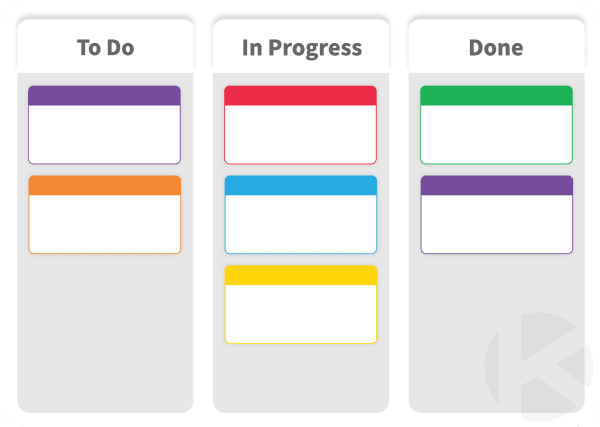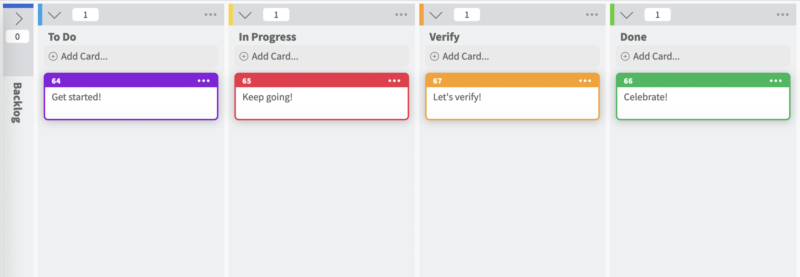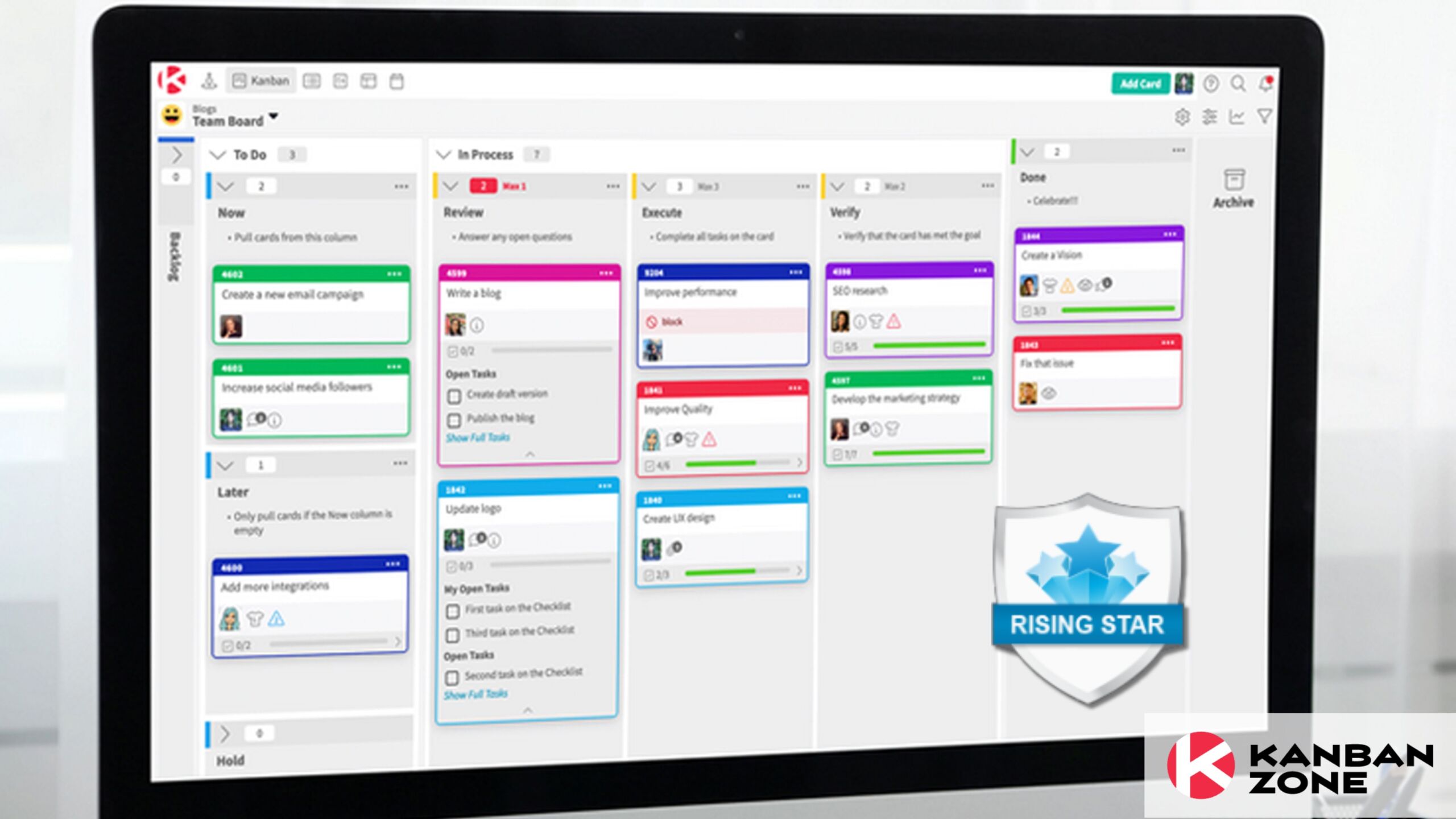
An appalling 98% of HR professionals are experiencing burnout.
And it’s understandable.
Managing employees can be overwhelming.
It gets incredibly complex when conducting processes like performance management and employee development.
HR professionals have to remain agile in keeping track of where each employee is in the performance management and development process, identify and help those who are stuck, and so on. They also need to handle other demanding HR tasks like hiring and onboarding.
This is where Kanban saves the day.
It helps HR professionals create a visual framework to visualize the performance management and employee development processes and optimize them. This leads to more agile processes.
I’ll show you how to practice this approach and win.
What is Kanban?
It’s a way to help organizations visualize their workflow.
Kanban makes it easier to keep track of work processes, identify bottlenecks, and make them more agile by making the right improvements.
How does it work?
The process begins with creating a board. It’s known as a Kanban board.
Set up distinct columns for every workflow stage on the board, then populate each column by adding corresponding cards.
The cards represent user stories, tasks, or work items to be completed under each stage.
For instance, a basic Kanban board can have 3 columns:
- To Do
- In Progress
- Done
This is how it looks.

Once a task is complete, the corresponding card is moved to the next column until the project is complete.
Such a visualization brings clarity to the work process. It makes it easy to:
- Manage the workflow
- Prioritize tasks
- Collaborate more efficiently
- Increase productivity
- Identify troublesome work stages
It’s also a great way to improve transparency among teams and organizations.
The Kanban board was initially used in the manufacturing industry to increase efficiency in production.
However, its effectiveness in identifying potential issues that hinder the flow of work can benefit any industry or department, including HR software and the HR department.
But in this case, it’ll look a little different. Let’s see how you can implement it.
How to Use Kanban for Agile HR Processes
I’ll show you three easy ways HR professionals can use Kanban to make more agile processes.
1. Create a Kanban Board for Each Employee
You can use a Kanban to make an agile performance management cycle.
Create Kanban boards for each performance management and development stage with the columns To Do, In Progress, and Done. You can use various Slack alternatives that offer Kanban board creation tools to go about this process.
Tasks completed under each stage should be represented as separate cards.
Ideally, this is what you can include in the Kanban boards:
Board 1: Planning
Cards to include:
- Set performance expectations and goals
- Identify the key performance indicators that will assess performance
- Establish a schedule for feedback discussions
Board 2: Monitoring
Cards to include:
- Gather relevant data to measure performance and measure KPIs
- Compare performance data against established goals
- Conduct progress review meeting
- Identify the gap between performance expectations and actual performance
- Document performance progress
Board 3: Developing
Cards to include:
- Collaborate on an individual development plan for the employee
- Match training resources to skill gaps
- Assign stretch assignments
- Assign a coach
Board 4: Rating and rewarding
Cards to include:
- Summarize employee’s performance and give a rating
- Reward good performance
Each card should include important details about each task, such as a description, deadline for task completion, etc.
This approach ensures that the process remains in motion and no activity is left out.
2. Use Kanban in Goal Setting
Goal setting is another area you can use Kanban to make agile HR processes.
Once you hold your annual performance review, set performance and development goals for employees.
Identify the stages your employees go through from the goal setting to its completion. They’ll make up your columns. This can include:
- Column 1: To Do
- Column 2: In Progress
- Column 3: Verify or review (This is the stage where managers or supervisors assess the goal results against the set KPIs)
- Column 4: Completed
Here is an illustration of how that would look.

The cards you add to the ‘To Do’ column will be the performance and development goals you set. For instance, for customer service agents, your cards can be:
- Complete 2 training modules on product knowledge
- Develop a customer satisfaction rating of above 90%
- Increase the first contact resolution rate to 80%
Each card should contain details like:
- Employee’s name
- Goal title
- Key performance indicators
- Goal timeline
Once an employee reaches the ‘Completed’ column, set other goals and add them to the first column.
Have regular one-on-one meetings with employees in the ‘In Progress’ column to discuss any challenges holding back their progress. And once a goal is complete, provide feedback to help them achieve better results in the future.
3. Use Kanban in Employee Development Plans
Another area where Kanban can help create agile HR processes is managing employee development plans.
Assess employees and determine the skills and competencies they need to develop to fulfill their roles effectively.
Translate these skills and competencies into cards.
You can have the three basic columns on your board:
- To Do
- In Progress
- Done
You can modify your columns based on the unique stages employees in your organization go through in their development program.
Examples of cards you can add for a marketer are:
- Strategic thinking
- Communication skills
- Content creation and storytelling
- Campaign management
Add these cards in the ‘To Do’ column. As the employee progresses, they can move the cards across the columns. It makes it easy to keep track of the skills they acquire.
For each skill card, you can attach the learning resources, such as online courses that they need to study.
Alternatively, instead of skills, create cards containing the learning and training programs the employee needs to complete depending on their skills gap.
How to Make the Kanban Method More Effective in Making Agile HR Processes
Kanban is a sure way to create more agile HR processes. But you can make it even more effective by:
- Adding fewer cards at a time. It ensures that tasks move more smoothly across the board, without clogging one column.
- Using color to indicate the status of the tasks on the board. For instance, use red for overdue tasks.deo
Make your virtual HR processes even more agile by continuously improving your Kanban board.
Seek feedback from employees on areas that you can improve in the next performance cycle.
Use Kanban for Agile HR Processes
These are just a few of the ways you can use Kanban to create agile performance management and employee development processes.
Experiment with different approaches and customize the board based on your organization’s specific needs.
This was a guest blog. Please review our guest blog disclaimer.
Learn to Work Smarter, Not Harder!
Get our top articles weekly.
Table Of Contents
Discover many more posts…







